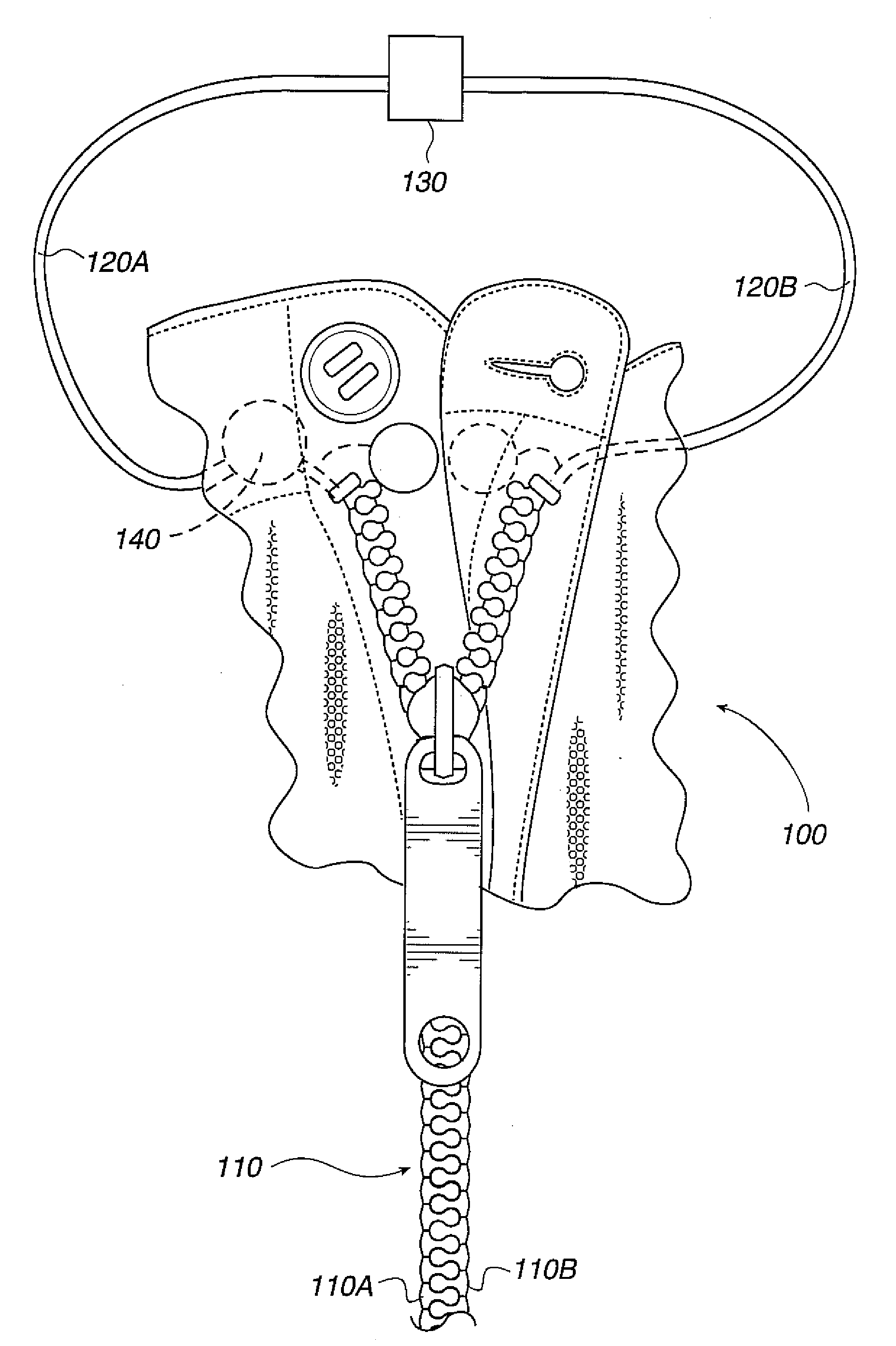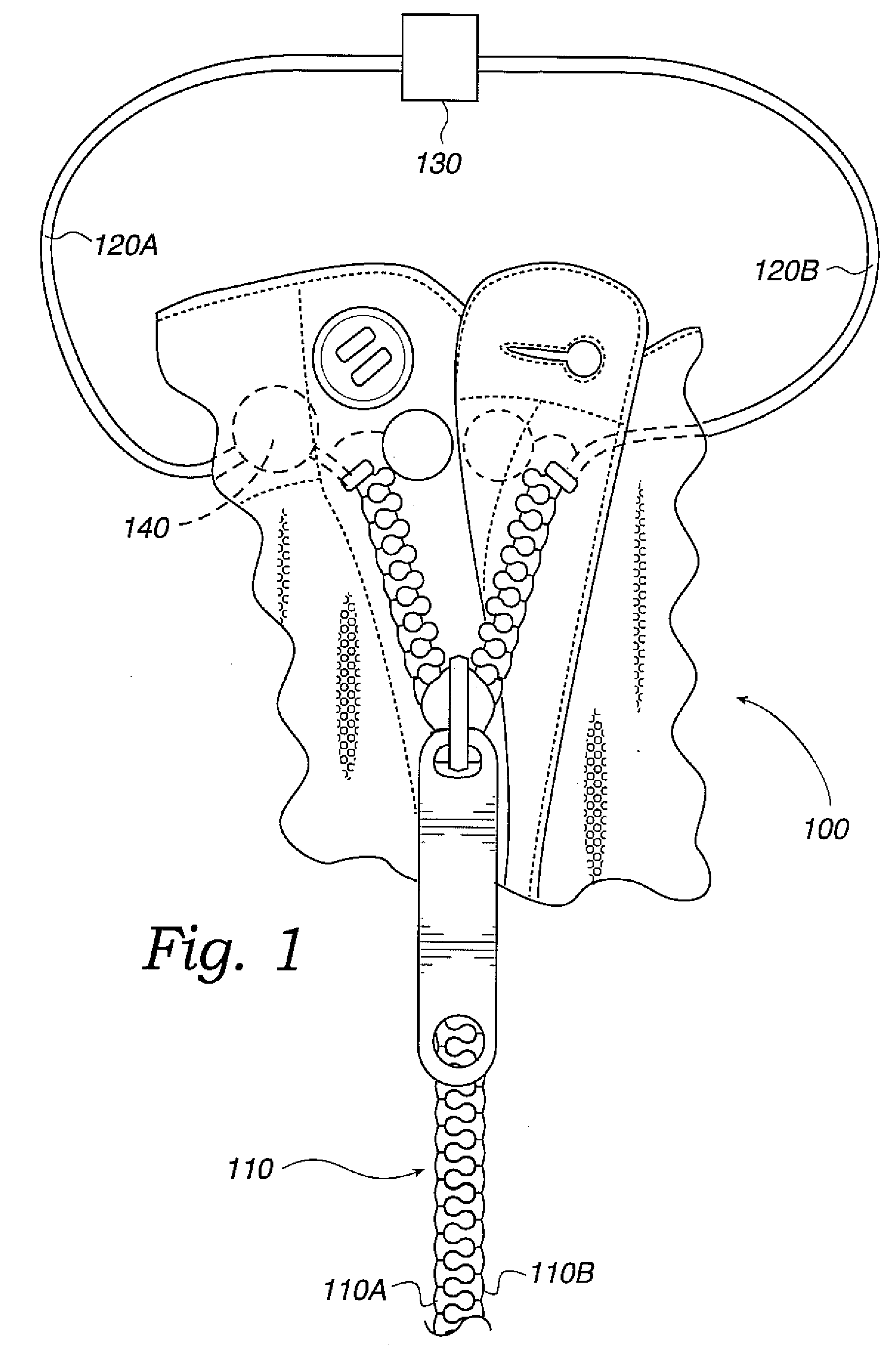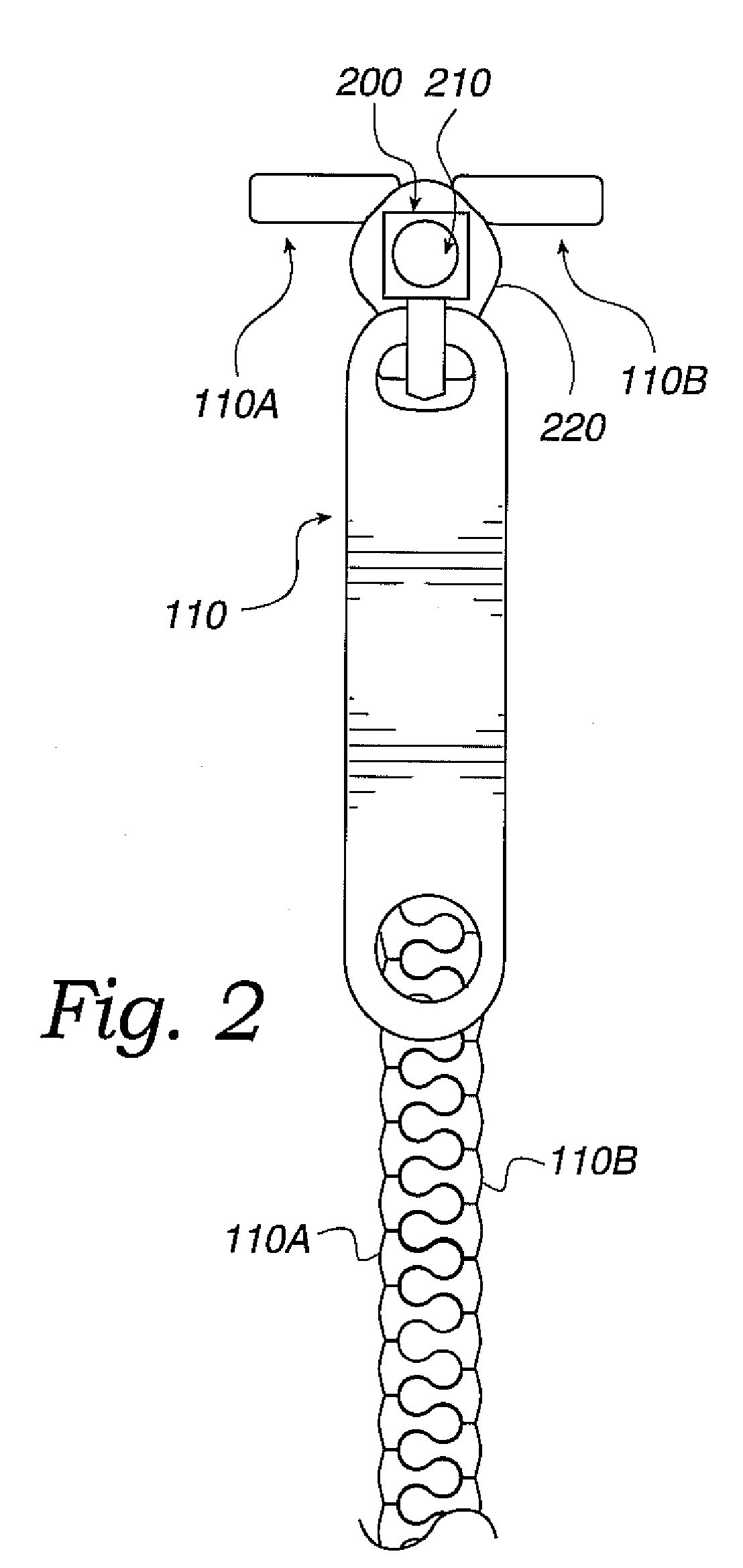Open fastener indicator
- Summary
- Abstract
- Description
- Claims
- Application Information
AI Technical Summary
Benefits of technology
Problems solved by technology
Method used
Image
Examples
Embodiment Construction
[0019] Referring to FIG. 1, a fastening device alarm system of the present invention is illustrated, using a zipper with a circuit and alarm connected onto a first and second top stops of the zipper. While, in accordance with one embodiment, the present invention is defined with respect to a zipper mechanism by way of example, the principals, concepts and elements disclosed here are applicable to other fastening means and mechanisms (e.g., buckles, belts, buttons, strings, etc.) and their functional and structural equivalents.
[0020] Fastening mechanism 100 as shown in FIG. 1 comprises a zipper 110 having first and second top stops 110A and 110B, conductive connections 120A and 120B, circuit 130, and alarm 140. In accordance with a preferred embodiment, fastening mechanism 100 can have a monolithic structure or can be manufactured from multi-assembly components.
[0021] Zipper 110 comprises one or more teeth and can be made of metallic (e.g., cast iron, steel, etc.) or non-metallic (...
PUM
 Login to View More
Login to View More Abstract
Description
Claims
Application Information
 Login to View More
Login to View More - R&D
- Intellectual Property
- Life Sciences
- Materials
- Tech Scout
- Unparalleled Data Quality
- Higher Quality Content
- 60% Fewer Hallucinations
Browse by: Latest US Patents, China's latest patents, Technical Efficacy Thesaurus, Application Domain, Technology Topic, Popular Technical Reports.
© 2025 PatSnap. All rights reserved.Legal|Privacy policy|Modern Slavery Act Transparency Statement|Sitemap|About US| Contact US: help@patsnap.com



